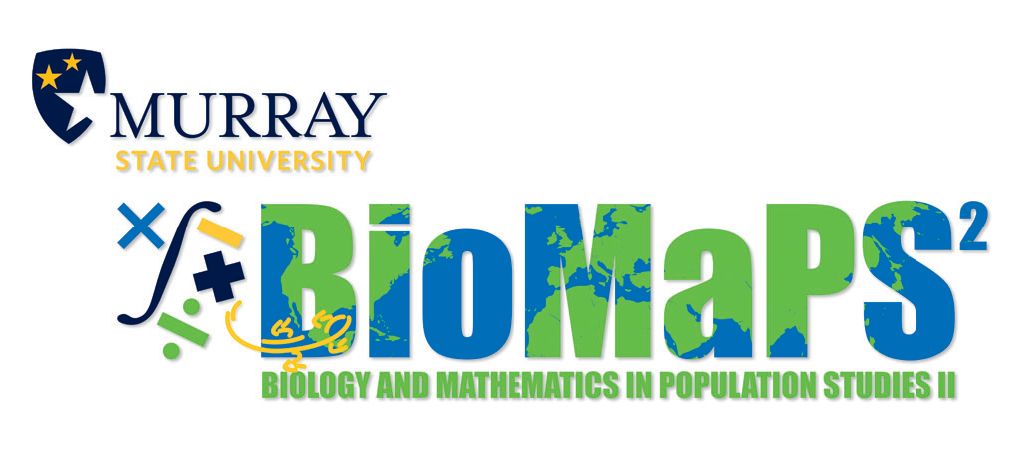|
|
|||||
|
In
2004,
the Biomathematics group at Murray
State
University was awarded a Research Incubation
Grant, Biomathematics at
|
|||||
|
Our
group
consists of faculty members from the Department
of Biological Sciences and the Department
of Mathematics & Statistics, which are both
housed in the
College of Science, Engineering, and Technology.
Our members include: |
|||||
|
|
Donald Adongo, Mathematics & Statistics Terry
Derting, Biological Sciences Claire Fuller, Biological Sciences Kate
He,
Biological Sciences Maeve
McCarthy, Mathematics & Statistics |
||||
|
We
have
a wide variety of research interests devoted to the
integration of mathematics and biology. |
|||||
|
Past
Activities
of the Biomathematics group include: |
|||||
|
A
regular Biomathematics
Seminar, which is well attended by biologists
and mathematicians at The
workshop
Confluence of Biology & Mathematics in the
Commonwealth was held on May 16-17, 2008 at Murray State
University! Speakers:
Dr.
John Jungck (Beloit College), Dr.
Andy Long (Northern Kentucky University) and Dr. Christopher
Mecklin (Murray State University). Schedule,
Dr.
Mecklinís presentation
|
|||||
|
Our
Research
Interests |
|||||
|
At
|
|||||
|
|
Using
capture-mark-recapture
methods and projection matrix models to estimate fecundity |
||||
|
Integration
of
Mathematics and Biology |
|||||
|
The
importance
of mathematical and computational tools in every area of
biological studies is well documented (Levin et. al 1997,
Science 275:334-343). Mathematical and computational
challenges in population biology, ecosystems science, and
epidemiology in particular have long been recognized. With new
conceptual advances and technology, research initiatives that
focus on integration of mathematics and biological issues are
expanding. A gap exists, however, in the ability for
biologists and mathematicians to converse and share expertise
in order to solve important questions relating to population
dynamics, epidemiology, immunology, and evolutionary theory.
Eliminating the gap between mathematicians and biologists is
essential in maintaining research productivity in the
Commonwealth and remaining competitive for new national
research agendas. |
|||||
|
|
College
of Science Engineering & Technology | |
|||||
Modified
February
4, 2009

